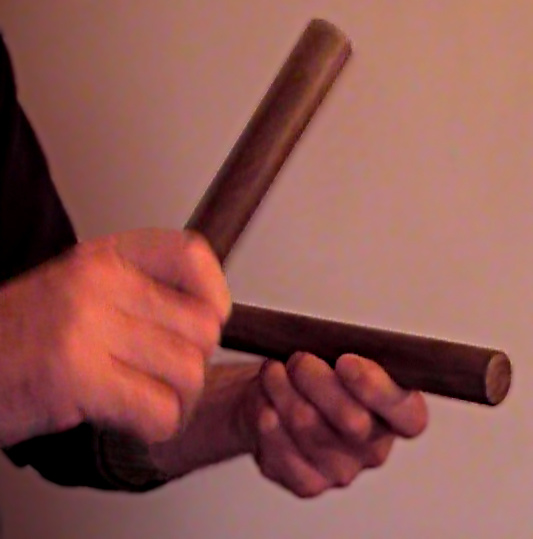If you are here because you are interested in algorithmic composition, but you are not really into Afro-Cuban music, then chances are that you don’t have a clue about what the Clave is.
If that’s the case, then this is the post you were waiting for: it will give you a basic understanding of the Clave.
Let’s start!
What is the clave?
The clave is a rhythmic pattern at the core of Afro-Cuban music. It is often played on two wood sticks called Claves, or on other percussion instruments, and it holds the music’s rhythm together.

The Claves.
The two main clave patterns used in Afro-Cuban music are the son clave and the rumba clave. You can listen to them here:
Son Clave
Rumba Clave
The clave spans over two measures: one of three notes and another of two. It can be played in two ways: 3-2 or 2-3, depending upon which measure is first.
The two measures are in a relationship of tension-relaxation: the 3 side of the clave is the strong part, the one that creates tension,
while the 2 side is the weak part, as it creates resolution.

The 3-2 Son Clave.

The 3-2 Rumba Clave.
As mentioned before, the clave is at the core of Cuban rhythms, as instrument patterns and melodic phrases build on top of it.
What does this mean?
Let’s look at an example. The following phrase starts with a pick-up, and it’s in 3-2 clave.

It is clear that this melody fits well with the clave. However, not all melodies will outline the clave so explicitly.
As a general rule, in order to determine the direction of the clave, one has to check if the melody has a tendency toward one direction or another.
This can be achieved by looking for patterns in the melody that resemble the clave.
The understanding of the clave, and how to arrange rhythmic and melodic patterns with it is an important topic for this blog. Expect more about it in future posts!
